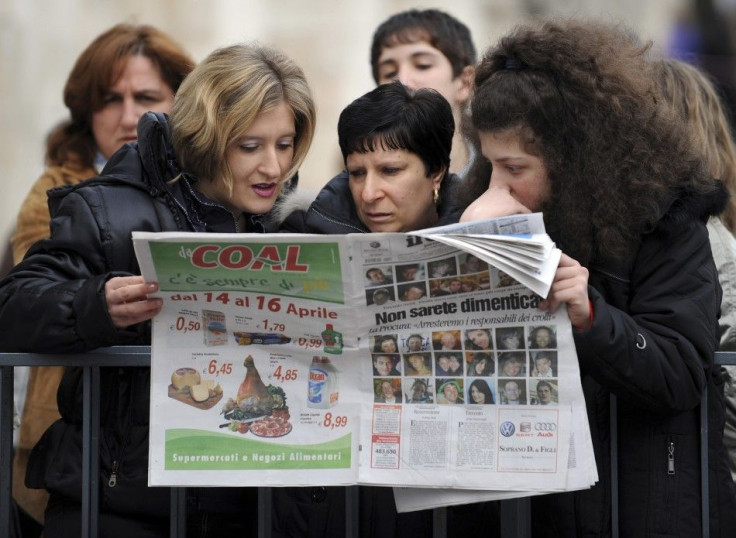Radon To Predict Earthquakes? Most Scientists Still Skeptical

The April 2009 earthquake in L’Aquila, Italy, has had deep aftershocks -- hundreds dead, tens of thousands homeless and a court verdict that may send scientists to prison for six years. Another reverberation that is still resonating involves a method for predicting earthquakes by measuring radioactive gas, a method long thought discredited but now back in the spotlight.
The L’Aquila earthquake came after tremors and less powerful earthquakes were recorded in the surrounding Abruzzo region. It also came shortly after Giampaolo Giuliani, a researcher at the Gran Sasso particle physics laboratory, had predicted a large quake would strike. Giuliani had based his warning on the rising levels of radon that his instruments had picked up.
Radon is a radioactive gas that is produced by the natural decay of uranium. Under the earth, it can build up in cavities and cracks, and it is thought that the straining of the Earths’ crust before an earthquake can release the bottled-up radon.
When Giuliani alerted the authorities, what followed was a bit chaotic -- the authorities used vans equipped with loudspeakers to warn L’Aquila residents to leave their homes. When the earthquake failed to appear, city officials complained to the police and Giuliani was forced to take down earthquake warnings that he had posted online.
Giuliani had previously asked for funding to study possible techniques for predicting earthquakes by looking at radon gas emissions but was turned down because his proposal “was not sufficiently scientific,” according to the Guardian.
Many geologists and geophysicists find the evidence for a radon connection lacking. Ross Stein of the United States Geological Survey told the New York Times in 2009 that while scientists were interested in using radon gas to predict earthquakes in the 1980s, it has proved of little use and was mostly abandoned by the late 1990s.
One problem with using radon as a predictor, according to Ross, is that while you can measure it at the surface, that’s a long way from the events leading up to an earthquake that occur miles underneath the earth.
Most geologists will point out that no single indicator has proved reliable in predicting earthquakes. Even Giuliani’s earthquake prediction was off by a week or more.
Still, some researchers are forging ahead with caution. In December 2011, Chapman University geophysicist Dmitar Ouzounov presented work relating to a 5.8 magnitude earthquake in Virginia the previous August. Ouzounov and his team looked at seven years’ worth of satellite images of the earthquake site and used a computer to estimate the average heat radiating at that spot each day.
They found that thermal radiation spiked significantly nearly two weeks before the quake and on the day of the quake itself. On the day of the earthquake, they also saw electromagnetic changes near the site very high up in the atmosphere. Some scientists think that heat spikes and electrical changes before earthquakes are caused by radon gas escaping and heating the lower portions of the atmosphere.
But USGS researcher Malcolm Johnston said in a December 2011 interview with the American Geophysical Union that he was still skeptical. Johnston and his colleagues have chased the radon angle as well, to no avail. Despite measuring radon levels in California for 20 years, they couldn’t find a consistent connection with earthquakes.
Natural weather fluctuations, Johnston told the AGU, could easily account for the heat spikes over Virginia for the quake.
“That’s the biggest noise source, and a crucial correction that needs to be done,” Johnston said.
© Copyright IBTimes 2024. All rights reserved.





















